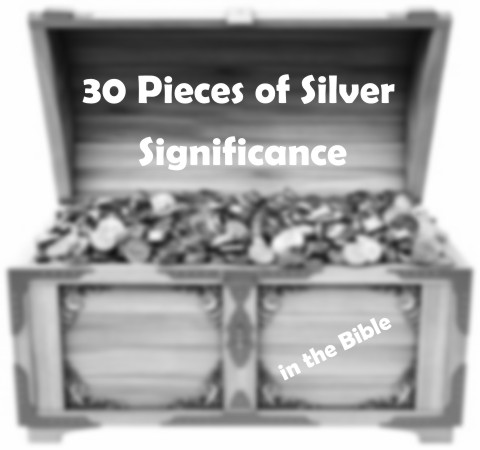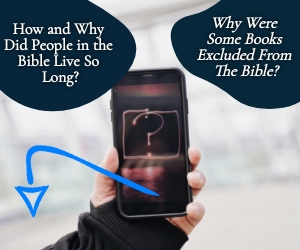Why does the Bible mention 30 pieces of silver? Is that number significant?
Joseph and Twenty Shekels of Silver
When Joseph was sold into slavery and was taken to Egypt, the price was the common price of a slave in that day and that was 20 shekels of silver, which would be about the same price as in Jesus’ day of thirty pieces of silver, so apparently the price of a slave has not changed much, relative to the amount of time that passed between Joseph’s and Jesus’ appearance between 4 and 6 BC. Twenty shekels was significant in Joseph’s day as we read as the “Midianite traders passed by…they drew Joseph up and lifted him out of the pit, and sold him to the Ishmaelites for twenty shekels of silver. They took Joseph to Egypt” (Gen 37:28). There are many things about Joseph’s betrayal and Jesus’ betrayal that have striking similarities, as if Joseph were a forerunner of the coming Messiah, Jesus Christ, which will be discussed later.

When Judas saw that they were going to murder Jesus, Judas wanted to stop it but it was too late.
Zechariah and Thirty Pieces of Silver
Zechariah the Prophet wrote about thirty pieces of silver that related to His judgment. Zechariah had just been writing about God’s judgment on the nations of the world (Zech 9, 10) when He turns His attention to Israel, where Zechariah writes “Become shepherd of the flock doomed to slaughter” (Zech 11:4) because “their own shepherds have no pity on them” and because of this, God says “I will cause each of them to fall into the hand of his neighbor, and each into the hand of his king, and they shall crush the land, and I will deliver none from their hand” (Zech 11:6) “Then I said to them, “If it seems good to you, give me my wages; but if not, keep them.” And they weighed out as my wages thirty pieces of silver. Then the Lord said to me, “Throw it to the potter”—the lordly price at which I was priced by them. So I took the thirty pieces of silver and threw them into the house of the Lord, to the potter. Then I broke my second staff Union, annulling the brotherhood between Judah and Israel” (Zech 11:12-14). Just as they rejected God as their true Shepherd, so too would the Jews reject Jesus in His day, Who is the Good Shepherd. Then they would betray Him for about a day’s wages, thirty pieces of silver but then Zechariah writes, “Throw it to the potter” which looked prophetically forward to when Jesus would be betrayed by Judas, who upon returning the thirty pieces of silver, or some translations say, coins, the Jewish leaders took the coins and purchased “the potter’s field” (Matt 27:7), later called the “Field of Blood” (Matt 27:7). Interestingly, this place was used for the burial of strangers.
Jesus and Thirty Pieces of Silver
The most significant mention of thirty pieces of silver is the account where Judas agreed to betray Jesus for thirty pieces of silver. That was very close to the price of a slave in that day, just as it had been in Joseph’s day, where the price was about twenty shekels of silver. When Judas saw that they were going to murder Jesus, Judas wanted to stop it but it was too late. He went back to the chief priests and elders and said, “I have sinned by betraying innocent blood.” They said, “What is that to us? See to it yourself.” And throwing down the pieces of silver into the temple, he departed, and he went and hanged himself” (Matt 27:4-5). The Jews saw this as blood money and they couldn’t use it in the temple so they ended up buying the potter’s field (Matt 27:7), foretold by Zechariah hundreds of years earlier. In addition The Prophet Jeremiah had prophesied about this long ago (Jer 19:1, 6, 11), as noted by Matthew, as he wrote; “Then was fulfilled what had been spoken by the prophet Jeremiah, saying, ‘And they took the thirty pieces of silver, the price of him on whom a price had been set by some of the sons of Israel, and they gave them for the potter’s field, as the Lord directed me’” (Matt 27:9-10).
Formerly Slaves
Don’t forget that we too were once slaves, but sold under the law and it would have cost infinitely more than thirty pieces of silver. It would have never been paid (Rev 20:12-15) so we can’t expect lost sinners to act any other way and it should humble us to remember that we were once enslaved to our sins. We were no more capable of breaking our bondage that the Jews were in overturning Rome. We needed not just a little help; we needed a God and that was God the Father by sending us His Son, Jesus Christ, and now “having been set free from sin, have become slaves of righteousness” (Rom 6:18) so “now that you have been set free from sin and have become slaves of God, the fruit you get leads to sanctification and its end, eternal life” (Rom 6:22). Since you can’t serve two masters, for certain we all have one master. The only question is who is the master? Is it sin or is it God? Are you slaves to sin or slaves to righteousness (God)? Jesus shows that there is no third option by saying, “Whoever is not with me is against me, and whoever does not gather with me scatters” (Matt 12:30). Who wants to be opposed to God!? Not me.
Conclusion
Finally, thirty is significant because it’s associated with mourning or affliction. Aaron was mourned for thirty days after his death (Num 20:29), just as Moses was (Deut 34:8) but Jesus was betrayed for our sake. Judas’ evil was used by God to do much good (John 3:16). Today, people are still putting their trust in Jesus Christ, and no amount of persecution seems to make believers deny Christ, even when they are betrayed by their own family, and not even for thirty pieces of silver.
Read more about this Bible character and thirty pieces of silver: Judas Iscariot
Resource – Scripture quotations are from The Holy Bible, English Standard Version® (ESV®), copyright © 2001 by Crossway, a publishing ministry of Good News Publishers. Used by permission. All rights reserved.








 Welcome to What Christians Want To Know! The mission of this site is to equip, encourage, and energize Christians. Look for regular updates including Bible Verses, Bible Stories, Christian Quotes, Christian Answers, and much more. Find out
Welcome to What Christians Want To Know! The mission of this site is to equip, encourage, and energize Christians. Look for regular updates including Bible Verses, Bible Stories, Christian Quotes, Christian Answers, and much more. Find out 









